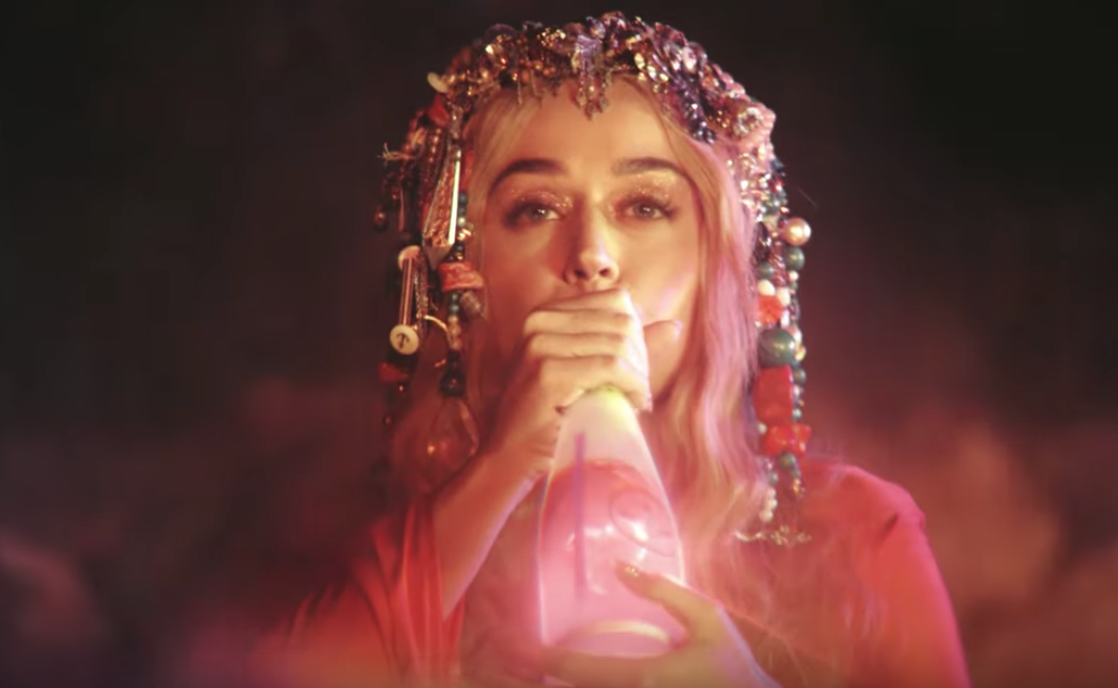When Mad Men ended in 2015, it was a surprisingly satisfying and well-received conclusion to the emotional roller coaster of rooting for Don Draper (Jon Hamm). In the end, rooting for him meant hoping that he would find his way back to advertising. After all, what other industry can there be for a soulless cipher with capitalist yet creative predilections? As the episode, entitled “Person to Person,” takes place in 1970, Don is within the perfect time frame to find himself at an “Esalen-like” retreat in Northern California, where he’s been taken so far off the beaten path of his original life that he figures he might as well go farther still. “Drink the Kool-Aid,” as the saying based on the Jonestown Massacre goes.
Barely a year after this series finale came the video for Lana Del Rey’s “Freak,” a flagrant homage to cult life (which Del Rey herself experienced in “underground sect” form before becoming famous) and its proverbial mercurial leader, in this instance played by Father John Misty. With the video directed by Del Rey herself, FJM is portrayed as a frenetic presence (often talking to himself on hilltops) in need of calming down by the simple dissemination of a little “tab” on his tongue so that he can fulfill Del Rey’s belief that “loving me is all you need to feel like I do”–that is, with a petite psychotropic drug thrown in. As is the reflection of the 60s’ trajectory itself, the vibes go from chill to sinister as LDR plays a record in a cabin-like space and the flag of the California Republic starts to look particularly ominous thanks to the manner in which it is shot.
Of course, when there’s something of a possessive romantic dalliance with a cult leader, things are bound to get weird no matter what. That Father John Misty is flanked by women (Del Rey’s sister included) in every scene only heightens one’s belief in the stereotype of the cult leader being a narcissist rather than “a caring person who just wants to help.” Preying on the vulnerabilities of those who have sought love and affection their entire lives, Del Rey sums up the pull of “the cult leader” with the lyrics, “Ooh, you’re cold as ice, baby/But when you’re nice, baby/It’s so amazing in every way/Ooh, you’re cold as ice, baby I don’t wanna fight, baby/It’s like I told you/If you stay, I’ll stay, yeah.”
With an ending that can allude to mass suicide in the Jim Jones spirit, depending on your interpretation, Del Rey picked up where the dark and sardonic ending of Mad Men left off the year before. But apparently, no matter how much time passes, Katy Perry can be nothing other than sugary in her artistry. Then again, at least she has never quite taken it to Taylor Swift in “ME!” levels.
While more authentic than Katy Perry’s version of the dawn of the 70s, Del Rey still doesn’t bother to dispense with her acrylic nails, something no cult member could maintain. And, in one sense, it can be argued that Perry (perhaps thanks to director Philippa Price) makes a political statement with the showcasing of a total absence of a cult leader, least of all a male one–simply getting picked up in a van (Kimmy Schmidt-style) and presumably drugged before waking up in her “treatment facility.”
Among her “healing” activities are included heart-shaped hot stones pressed against her back, watering bottles filled with barely beating hearts and, of course, drinking a pink elixir in the vein of Kool-Aid. Cavorting through fields and forming circles of trust as she confesses, “Just because it’s over doesn’t mean it’s really over/And if I think it over, maybe you’ll be coming over again/And I’ll have to get over you all over again,” it seems, in the end, her crack at “wellness” doesn’t exactly have her coming out the other side. Though she does literally do so, albeit in a far more frazzled and brain-fried state than when she entered. In this sense, one could say that joining a cult is much like an allegory for a relationship itself. So sure, for a Katy Perry pop song, the visuals are “profound.” But let us not forget the two original sources of pop culture in the 2010s that brought far more faux depth to the Manson meets Esalen life.




















